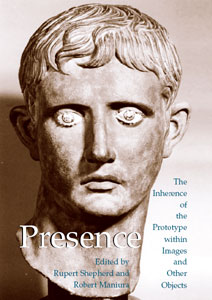
Details
Edited by Robert Maniura and Rupert Shepherd
Ashgate, 2006
Histories of Vision series
340 pages, 58 black-and-white illustrations
hardback
ISBN 978 0 7546 3493 5
Reviews
This anthology has much to commend it: presence is a fascinating and helpful topic that can be usefully deployed when considering problems in representation and the volume’s cultural sweep is remarkably wide which is undoubtedly its greatest strength. (David Packwood, Art History)
The group of contributors is outstanding, as well as satisfyingly international. The subject is one of the most important to have surfaced in art history since the late 1980’s and one that this kind of cross-cultural ‘world art history’ approach can really help progress. I would expect the volume to arouse a good deal of interest. (Jas’ Elsner, University of Oxford)
Summary
In about 25 BC tribesmen of the kingdom of Meroe placed a bronze head of Augustus, cut from a full-length statue, beneath the steps of a temple of victory: the decapitated head of the Emperor was thus regularly trampled underfoot. Two millennia later, during the second Gulf War, Iraqis ‘insulted’ a toppled bronze statue of Saddam Hussein by beating it with their shoes. Do these chronologically distant but apparently related examples of the defamation of images imply that the persons represented were regarded by their detractors as in some way ‘present’ in the images?
Presence: The Inherence of the Prototype within Images and Other Objects reconsiders the notion of ‘presence’ in objects. The first book to address the issue directly, it contains a series of case studies covering a broad geographical and chronological range from ancient Greece and the Incas to industrial America and contemporary India, as well as examples from the canon of western European art. The studies reveal the widespread evidence for this striking form of response and allow readers to see how ‘presence’ is evoked and either embraced or repressed in differing historical and cultural contexts. Featuring a variety of disciplines and approaches, the book will be of interest to students of art history, art theory, visual culture, anthropology, psychology and philosophy.
Contents
- Introduction, Rupert Shepherd and Robert Maniura
- ‘Not one hair different’: Wen Zhengming on imaging the dead in Ming funerary portraiture, Craig Clunas
- Projecting presence: the monumental cross in the Italian church interior, Donal Cooper
- Installing absence? The consecration of a Jina image, John E. Cort
- Presence and translucence: Appar’s guide to devotional receptivity, Richard H. Davis
- Metonymy in Inca art, Carolyn Dean
- Presence of divinity: Poussin’s conception of figures and the depiction of mythical nature, Gert Fischer
- Psychological analysis of deciding if something is presented in a picture, Norman Freeman
- Desire and disgust: touching artworks from 1500 to 1800, James Hall
- What is ‘presence’?, Andrew Harrison
- Trompe l’oeil painting and the deceived viewer, Michael Leja
- The representation of ‘soul’ by Rembrandt, John Nash
- Amphiaraos present: images and healing pilgrimage in classical Greece, Alexia Petsalis-Diomidis
- Wonders taken for signs: rethinking the ‘fetish’, Cesare Poppi
- The image of the Roman emperor, Peter Stewart
- Sound observer and ways of representing presences, Eugene Y. Wang
- Bibliography
- Index
